If there isn’t already a grotesques and gargoyles tour of Oxford there really should be. Characterful stone carvings celebrating all of life from monsters to mermaids, demons to dragons, professors to pastry cooks, I fancy there must be hundreds of them, all different, in the city. Gargoyles are the useful ones, serving as waterspouts, (from the French word ‘gargouille’ meaning ‘throat’) their open mouths disgorging water away from the rain pummelled rooftops of our ancient buildings. Grotesques, (from ‘grotto-esque’, a style of ornament found in underground Roman grottos thought to ward off evil spirits) are also more likely to be found on the tops of walls, parapets, and towers but these comic caricatures are purely decorative. I like to imagine they are the stonemasons equivalent to an artist’s doodle, playful imaginings, whimsical notes on the day to day, sometimes scary, occasionally provocative but mostly to poke fun. This tradition, (that continues to this day) was made popular by the master builders of our medieval cathedrals; it was soon copied by the early University architects eager to show that their Oxford Colleges (looking like monastic cloisters) were in keeping with other religious institutions.
There are ways of seeing the carvings close-up without straining your neck, (from the tower platform of the Church of St Mary the Virgin for instance or in the Canterbury Quad of St John’s College), but today I need a pair of binoculars. For I am looking for a particular stone head that is fixed high up. It is, I am told, to be located on the tower of the old 12th century church of St Peter-in-the-East, now the library of St Edmund Hall just off the High Street. The face of someone who lived not that long ago by the name of Gerald.
Gerald was the late husband of Pam Tuckwell, who I’d happily encountered at a ‘Memory Lane’ event at the Oxford Museum in the Town Hall. When she first met him, she tells me, back in 1964, he was an apprentice stone mason at Benfield and Loxley (a company that once owned the largest brickworks in the world in Sandford just outside Oxford, as well as the stone quarries at Bladon which they used to construct amongst other Oxford buildings, the New Bodleian Library and Nuffield College). Pam still keeps the tools Gerald used, tucked away safely in the garden shed at the home they once shared in Wolvercote. And it is here over a cup of coffee, her voice catching occasionally with emotion, she tells me his story.
‘When I met Gerald, he was 17, and already two years into a five-year apprenticeship as a stone mason. He attended Oxford College of Technology one day a week and the other days he worked at Benfield and Loxley which was then in Bullingdon Road, Cowley. He was a banker mason, which means he had his own bank or station in the yard. Here he cut the stone to the required size and shape, which was mostly done by hand. They used lots of water in the process and in the winter his hands would freeze to his metal chisels. Occasionally he would go out to colleges and become a fixer mason, which is someone who fixes the prepared pieces into place. He would always take the Oxford Mail and make a paper hat to wear to keep the dust which was plenty out of his hair. When he’d come home, he’d stand in the hall and strip off all his clothes which were full of stone dust, before he showered and changed.
Each mason has his own sign to identify his work. You were only allowed five cuts to make your sign. Gerald’s was a mallet, one cut for each side of the tool and one for the handle.
His mallets were made from applewood and very heavy. Today things are different; mallets are made from nylon, stone is cut by machine and marked out on a computer. I believe an apprentice only does three years these days.
He enjoyed his job, but in the end he couldn’t make it pay. He went to work at Pressed Steel, as a door fitter on the factory line. But I’ve always been very proud of the work he did as a stone mason. He worked at Dorchester Abbey, Pitt Rivers, he made the mullions on Alice’s Shop in St Aldates – Oxford is full of his work.’
Including helping with the restoration and conversion of the Church of St Peter-in-the East (once the largest living in Oxford, but by the 1960’s the pews had emptied) into a library for St Edmund Hall next door. Part of the project was to commission the sculpted heads of those involved and to fix them on the balustrade of the church tower. This was completed in 1969. One of these is of Gerald.
And so, I find myself hurrying along New College Lane to check him out. The honeyed old walls of the college behind are dripping with purple lilac and dark pink cherry blossom and as if by coincidence the grotesques that peep out from behind the foliage, a trio of monkeys here, otters playfully tumbling together there, a demonic mask, scarab beetles on a dung heap amongst others were carved by Michael Groser, the very same man who sculpted Gerald. But I cannot stop. I am on a mission. As I round the last bend a secret side door opens to reveal a hidden garden, just for a moment. Then suddenly the tower looms up. And there he is. High up, second from the right. Definitely Gerald. These are caricatures of course, but Pam has shown me his photograph. And described him. ‘A man of two sides’ she says. ‘Quiet and intelligent but also a fun character always up to making people laugh and doing good. They used to call him Adam in the yard, because he looked like Adam Faith.’ Yes, that’s him. But just to make sure I walk through the porter’s lodge, past a row of medieval grotesques and gargoyles to the pretty Broadbent Garden to the north of the old church. There I can look at him from a different angle. There are thirteen heads in all bedded into the cornice around the tower, including a rather wonderful portrait of Reverend E. G Midgley, the Dean, with his golden retriever Fred, both in dog collars. But my favourite is of Gerald. And whether this was done on purpose or by accident he is looking in the direction of Wolvercote, to his old house where Pam still stores his stonemason’s tools. I can’t think of a better memorial.
Contributing photographer John Milnes
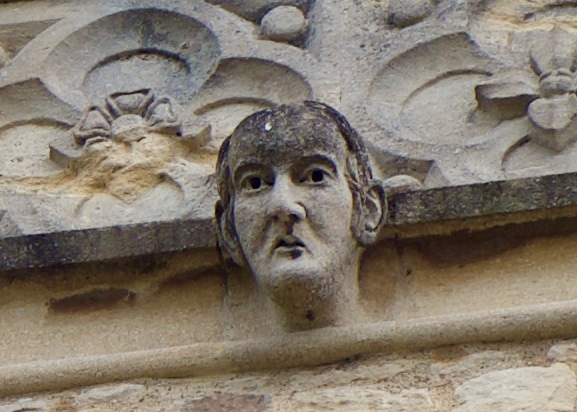
Gerald Tuckwell, stonemason, on the Northern parapet of the tower of the now St Edmund Hall Library
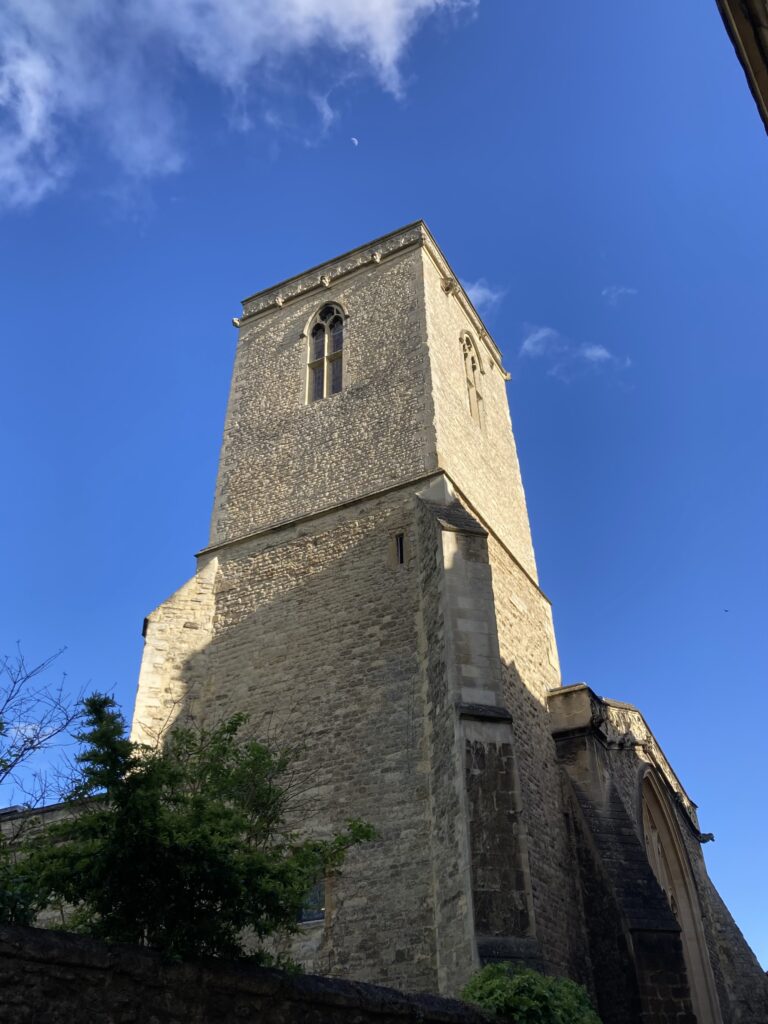
Looking up as you come from New College Lane. As well as Gerald there are two other young stonemasons,
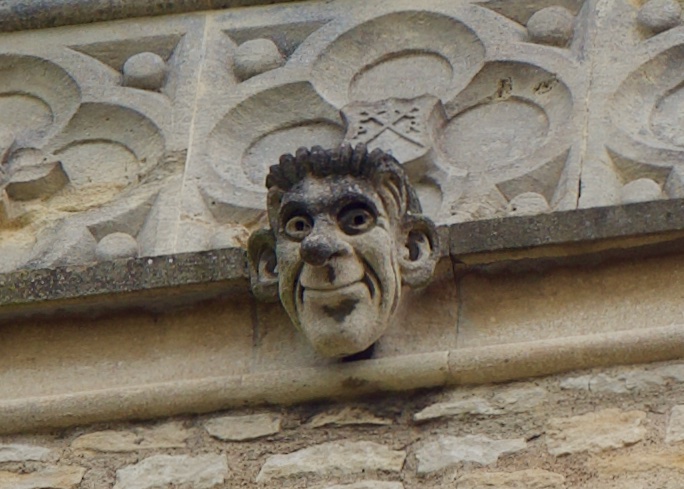
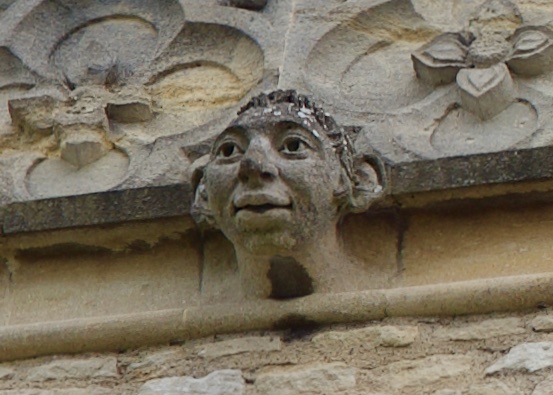
Henry Dollamore (left) and Peter Robinson (right)
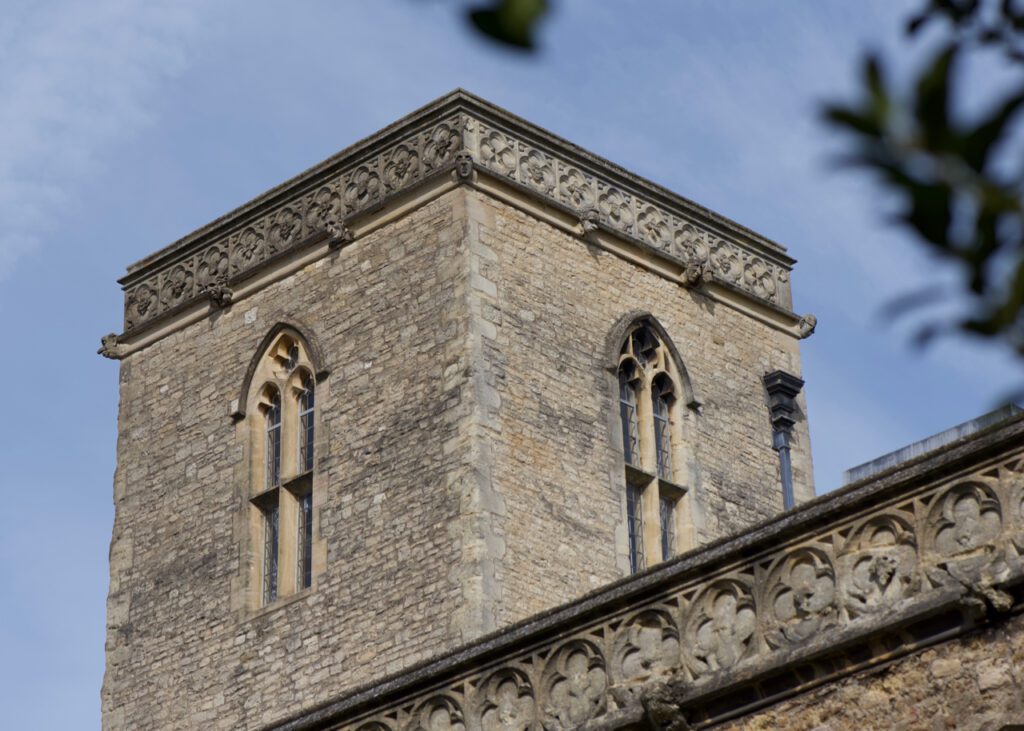
The east and south faces of the tower
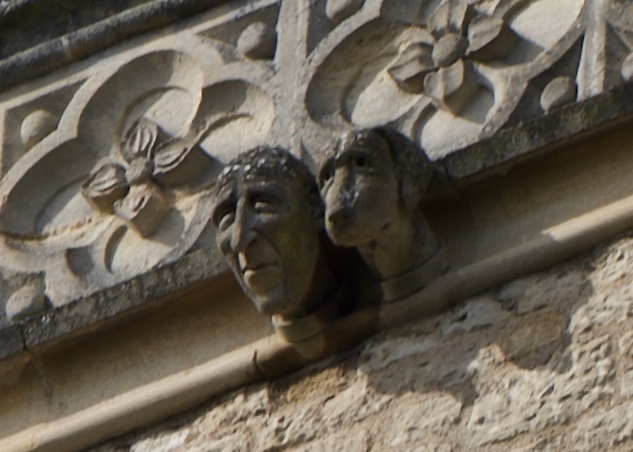
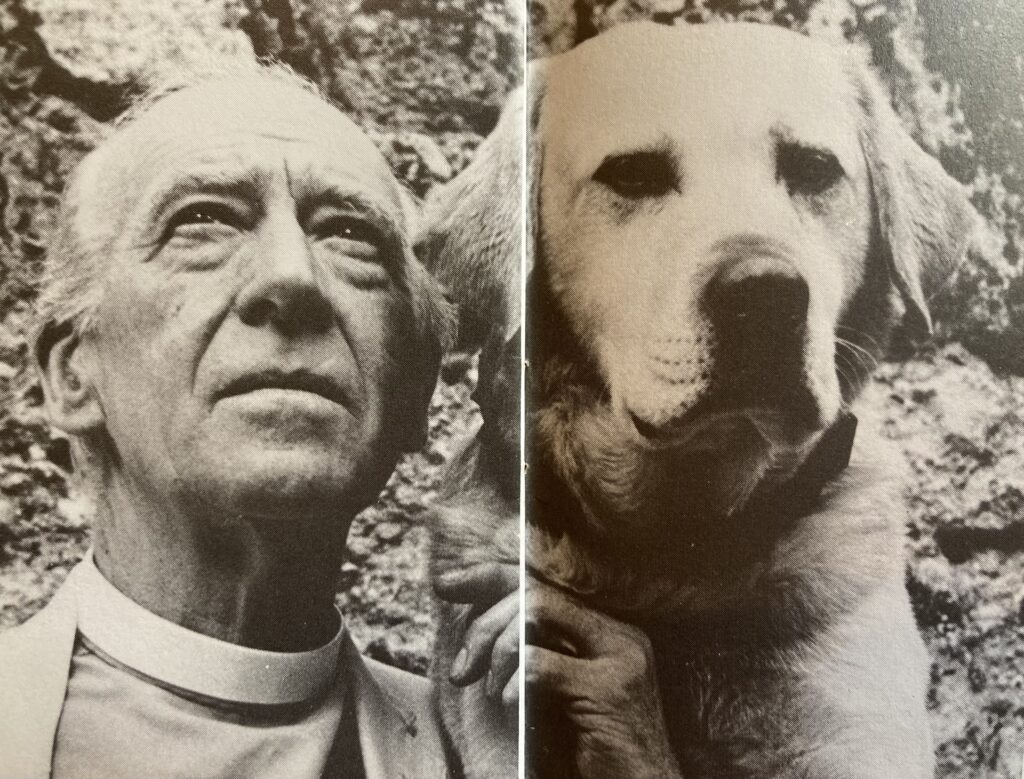
Reverend E. G. Midgley (Dean and Chaplain of St Edmund Hall) with his golden Labrador Fred (left in stone). He agreed to have his likeness matched (right) with Fred’s replacement golden Labrador, William for the book ‘Oxford’s Gargoyles and Grotesques’ by John Blackwood. This epitaph was written when Fred died:
Beneath this turf the Dean’s dog Fred
Without his master, goes to Earth, stone dead.
But on the tower, stone Dean and Fred together
Enjoy the sunshine and endure bad weather.

Looking south.
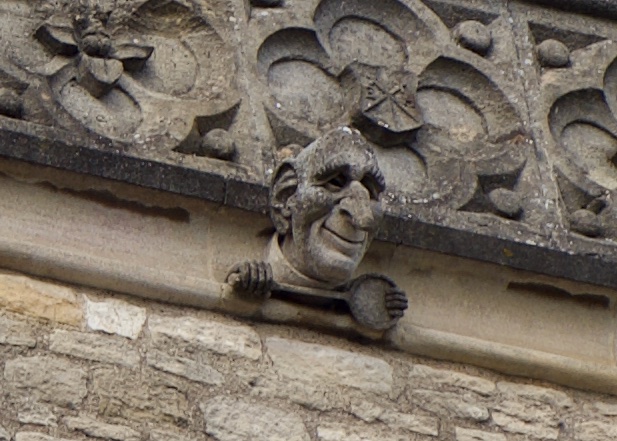
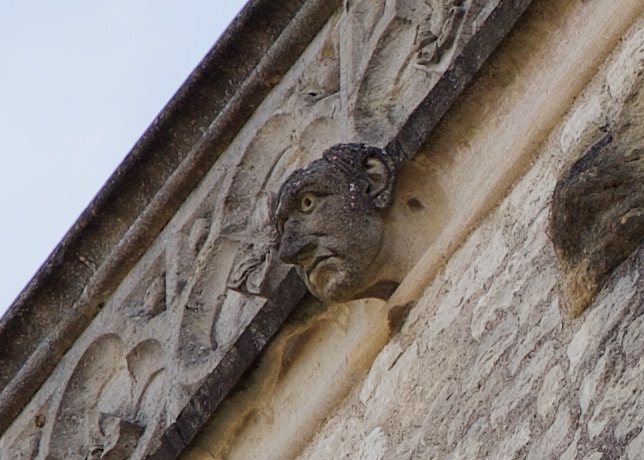
Dr J.N.D Kelly, Principal, 1951-1979 was a regular squash player (left) and J.R Allen was the architect on the project
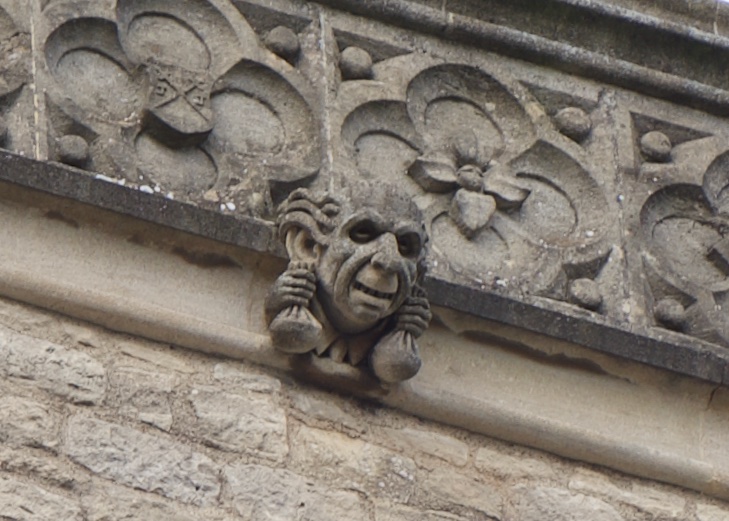
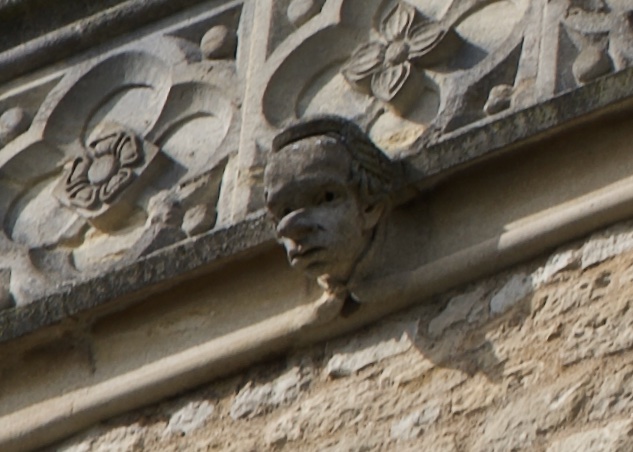
Mr R.E Alton was the bursar at the time of the restoration hence the moneybags (left) and Mr Hackney the college librarian, who also spent some time at the bar, hence the wig. (right)
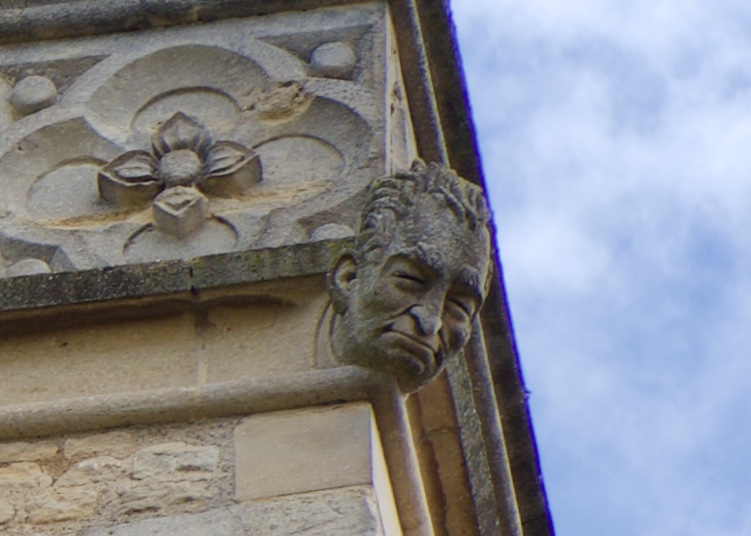
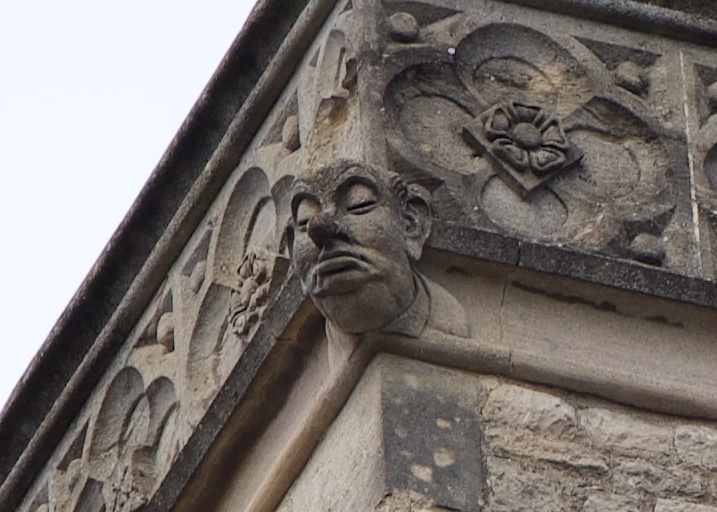
Mr Colin Hann was the foreman at Benfield and Loxley (left) and Mr G.V Trodd was the MD of the firm (right)
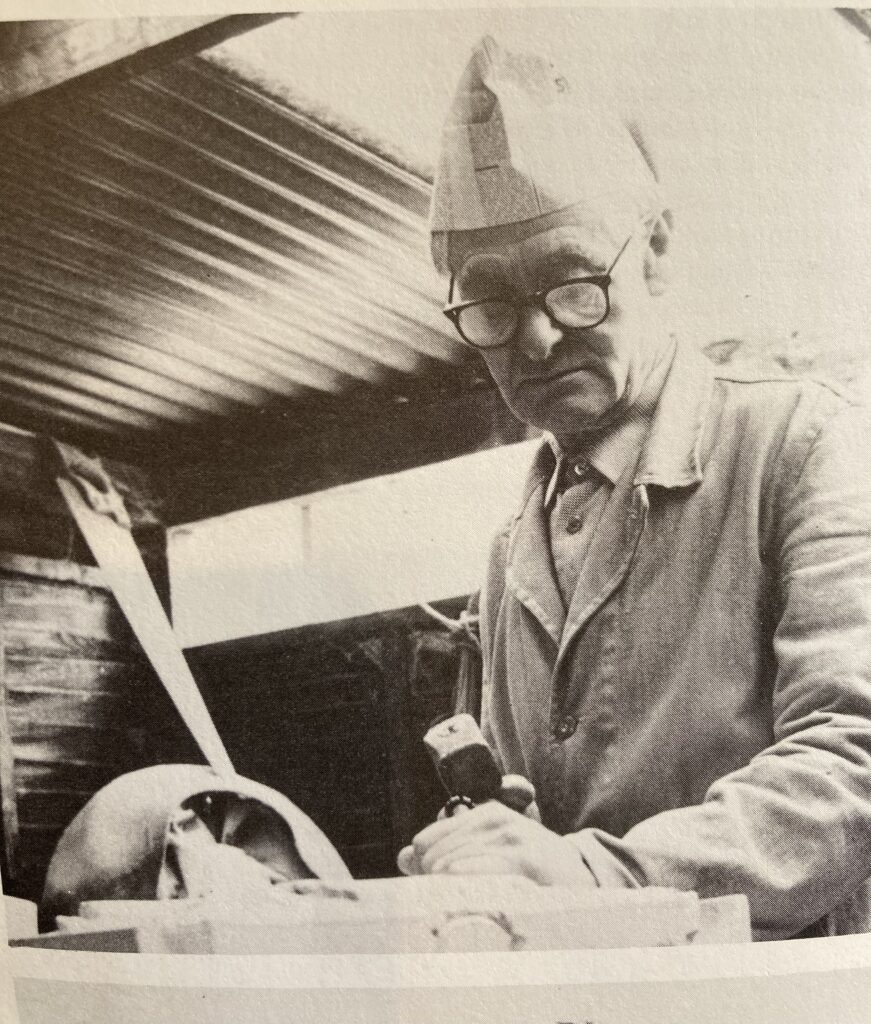
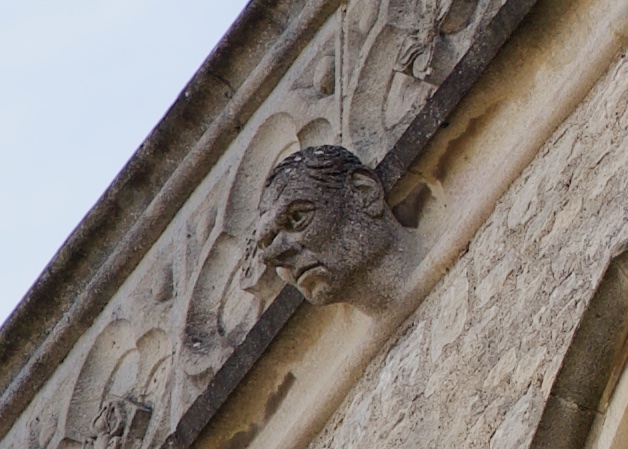
(Left) Michael Groser who carved all the figures on the tower. Here he is wearing the signature newspaper hat to keep off the dust. (Right) is his self portrait, looking out from the west of the library tower. An artist “[needs] to take into account how [the grotesques] would look to the eye in three dimensions from a distance and from below…It’s to do with the fore-shortening and the perspective of the figures and also the way the shadows work in order to create the strength of design that can be understood by the passerby”, he said.

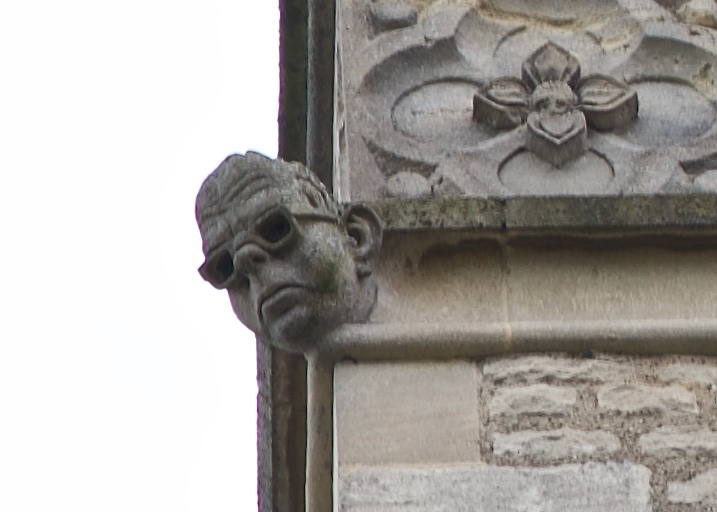
Dr A.B Emden, Principal 1929-1951 (left) and (right) Albert Collett, mason and foreman at Benfield and Loxley Ltd.

Grotesques on New College Lane, all sculpted by Michael Groser
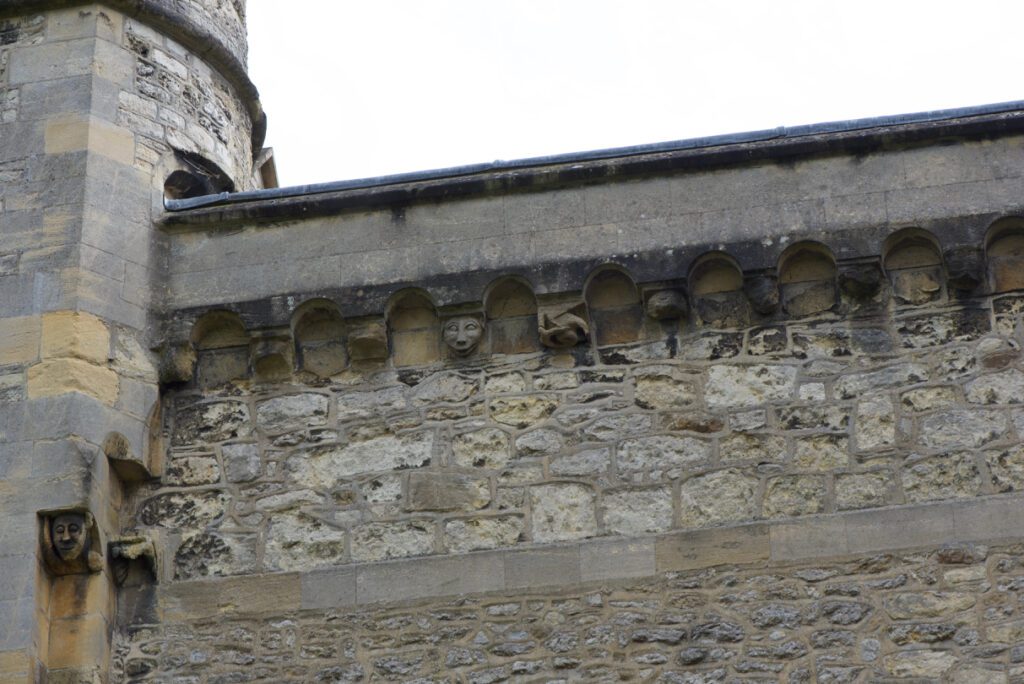
Older grotesques on the south side of the old Church of St Peter-in-the-East. Some are missing.
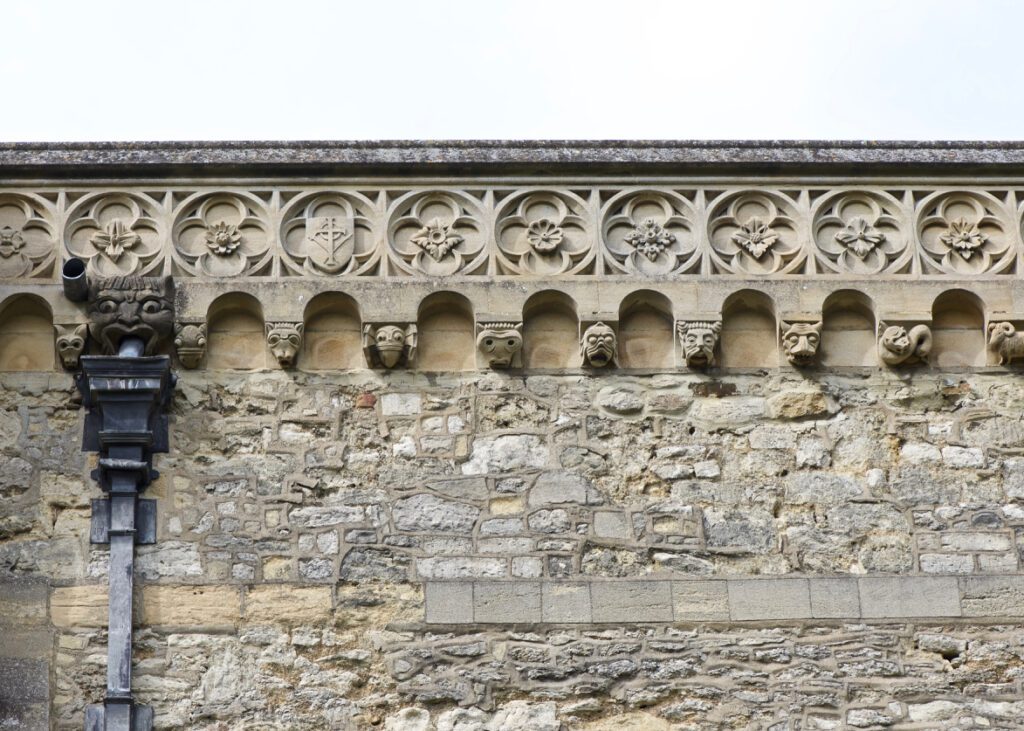
A gargoyle, next to some restored grotesques on the library.
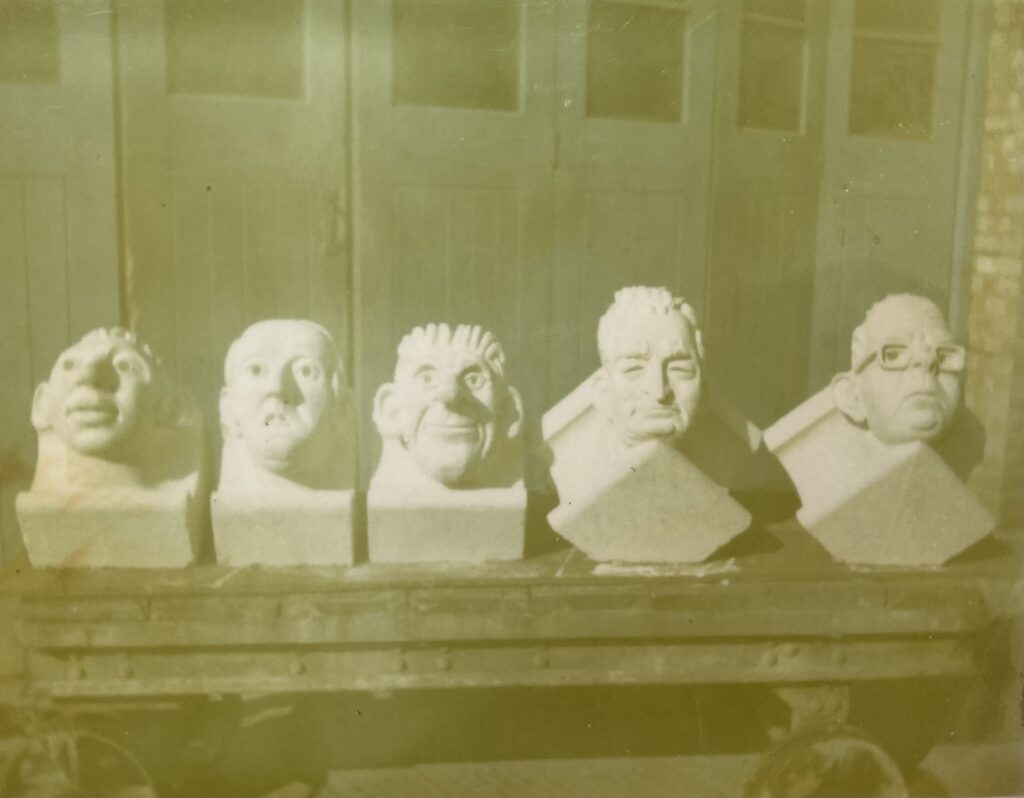
Heads in the yard, waiting to be taken by the fixer masons to be installed. Gerald is second from the left, the rest all worked for Benfield and Loxley. (Photograph courtesy of Pam Tuckwell)
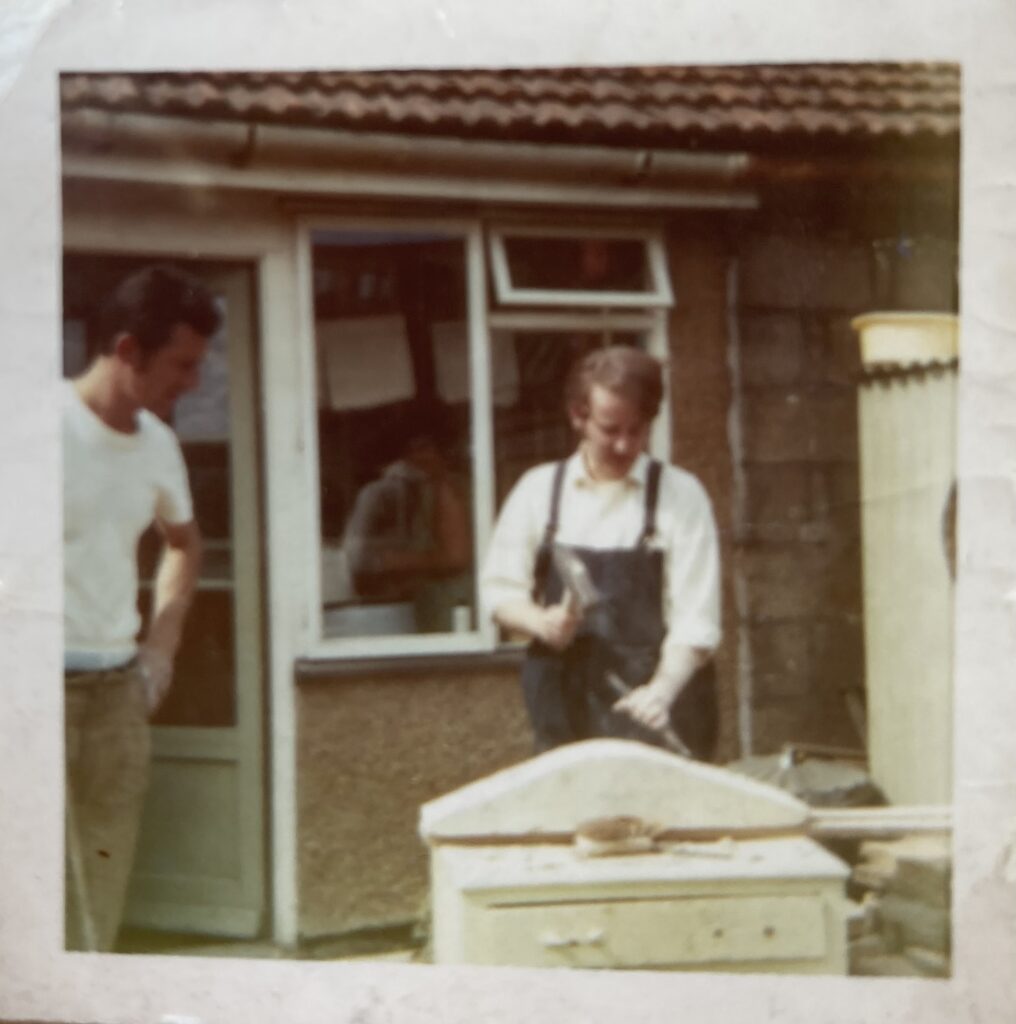
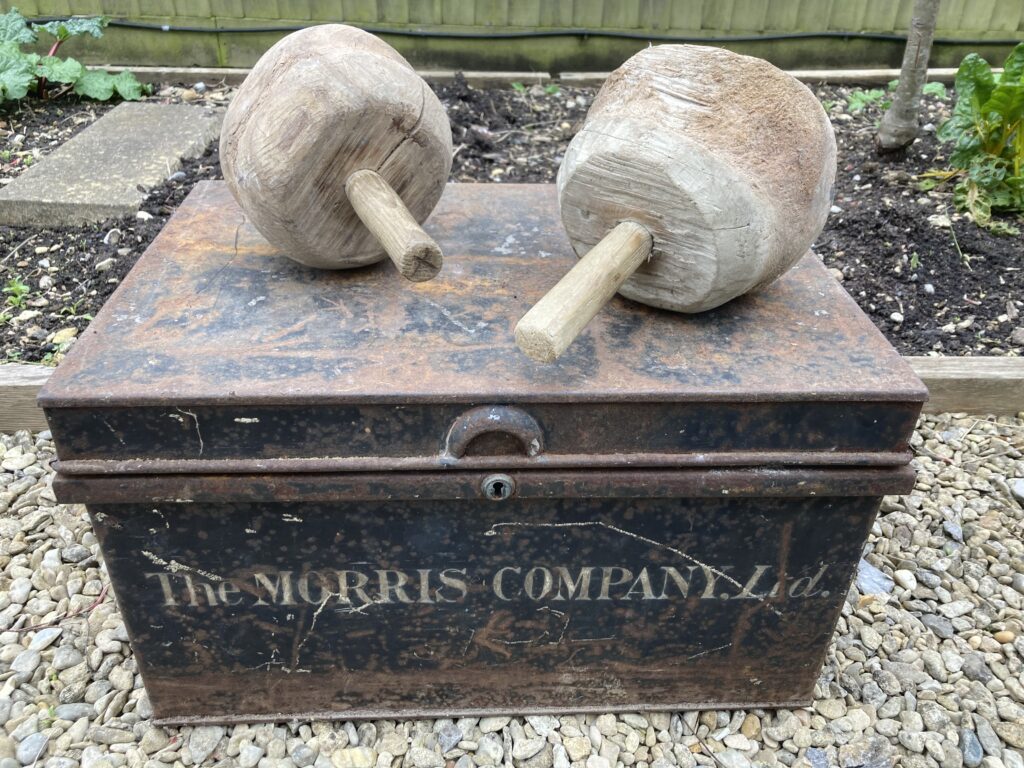
Gerald at work with his mallet and chisel. Pam still keeps his tools and applewood mallets.
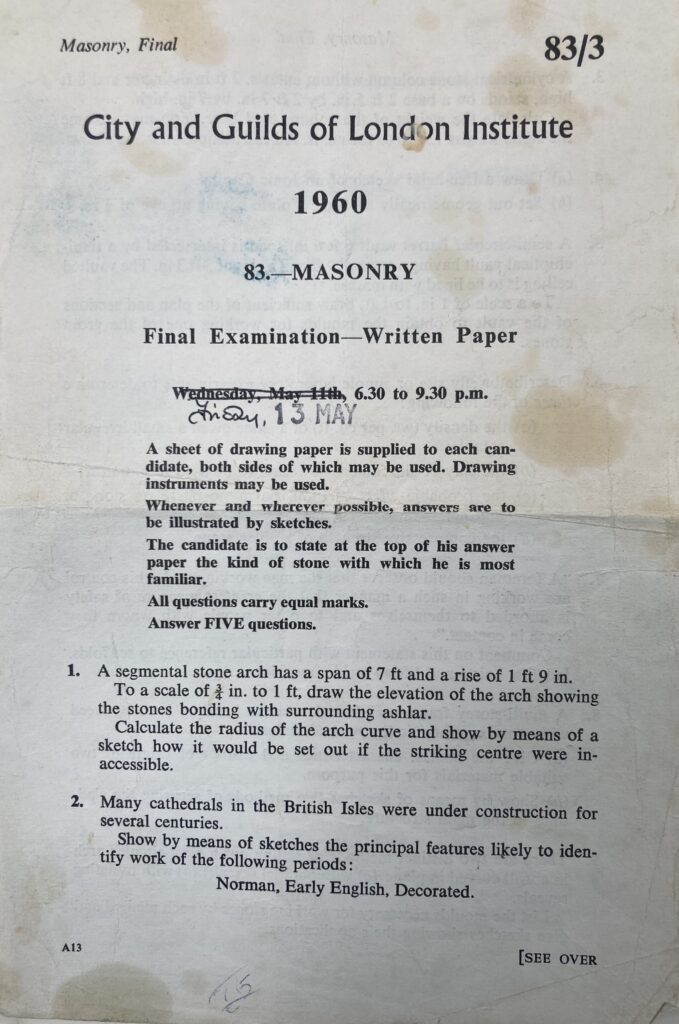
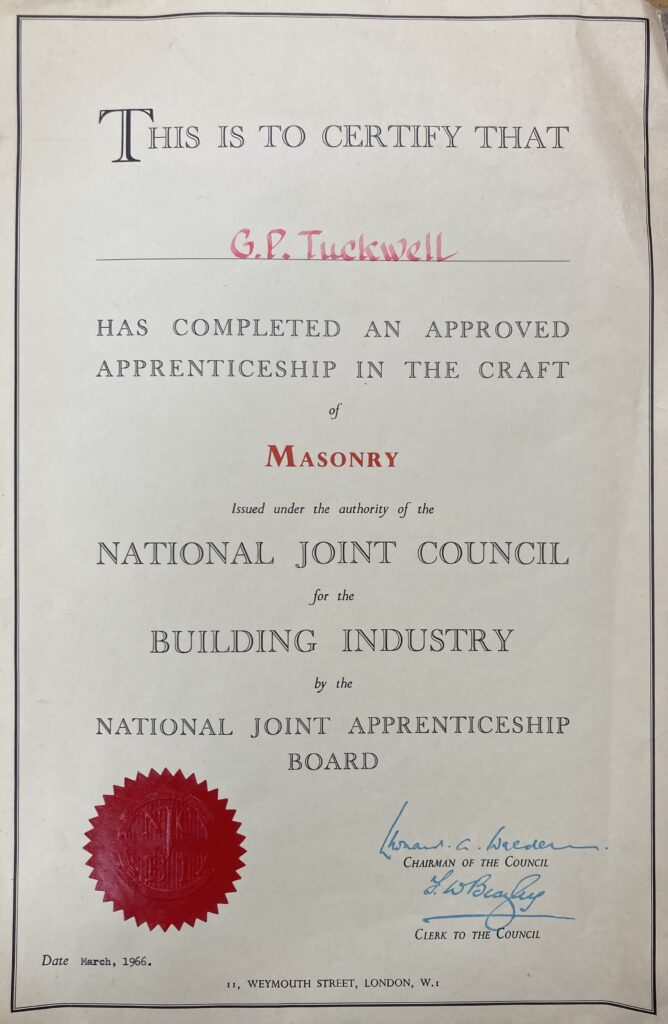
One of the masonry exam papers taken by Gerald, and his approved certificate. He won many awards during his time as a stone mason.
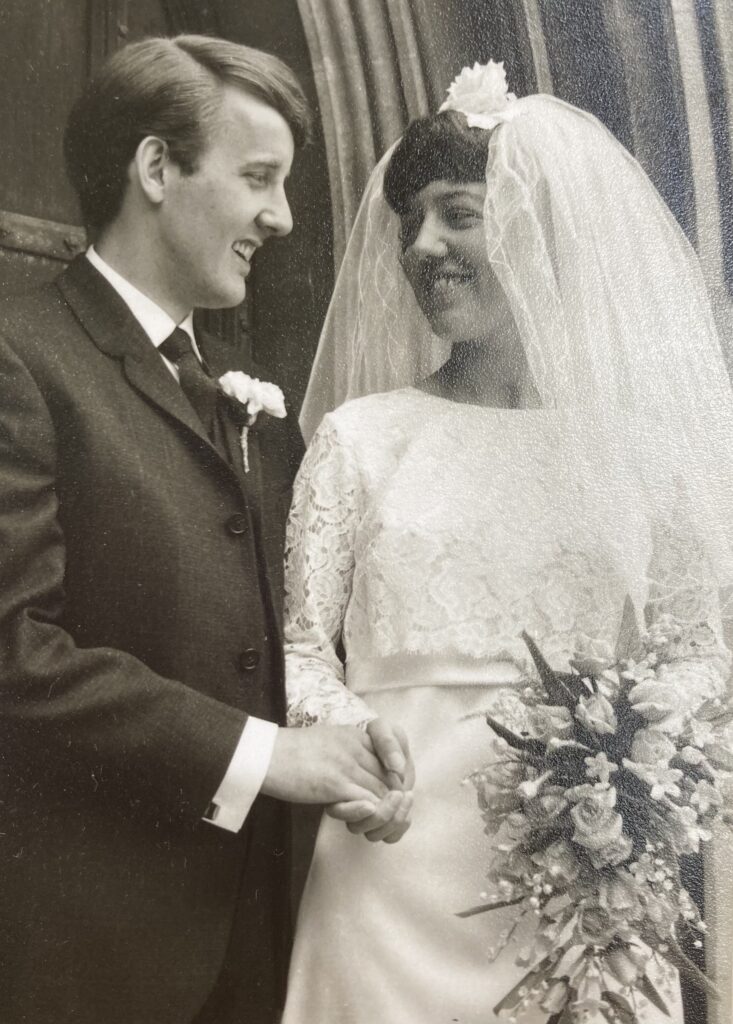
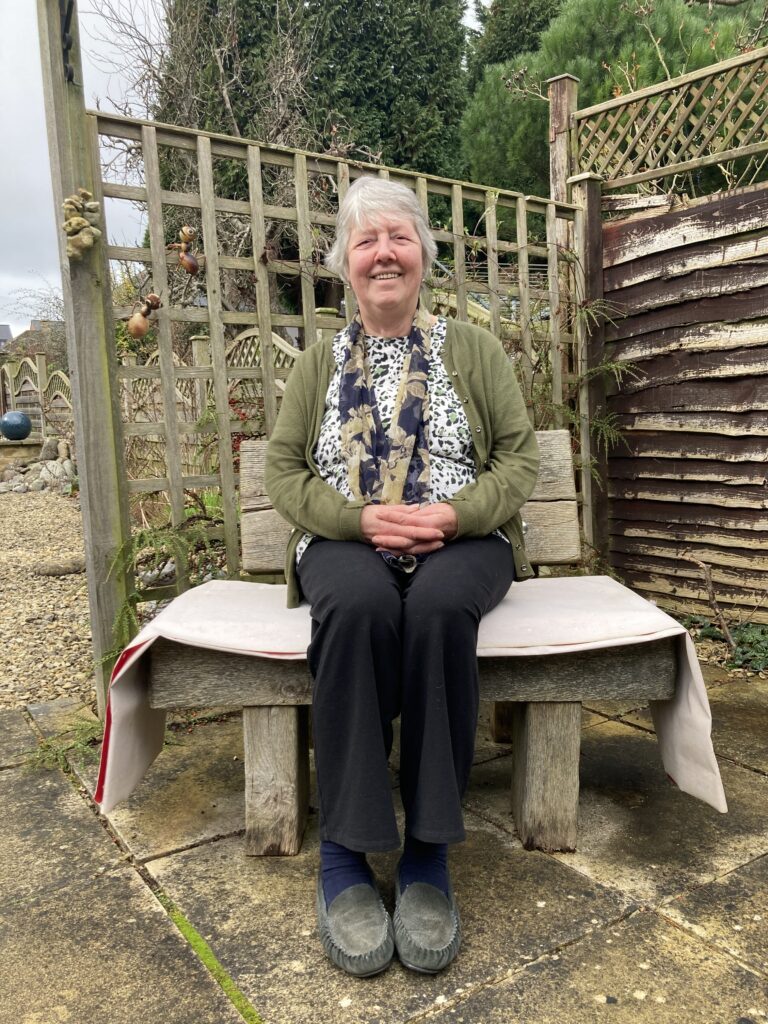
Gerald and Pam on their wedding day. Pam’s mother joked that she had married ‘a posh boy from Wolvercote, because he had an inside toilet and upstairs bathroom.’ (Right) sitting in the garden of the home she shared with Gerald before his early death in 2016.
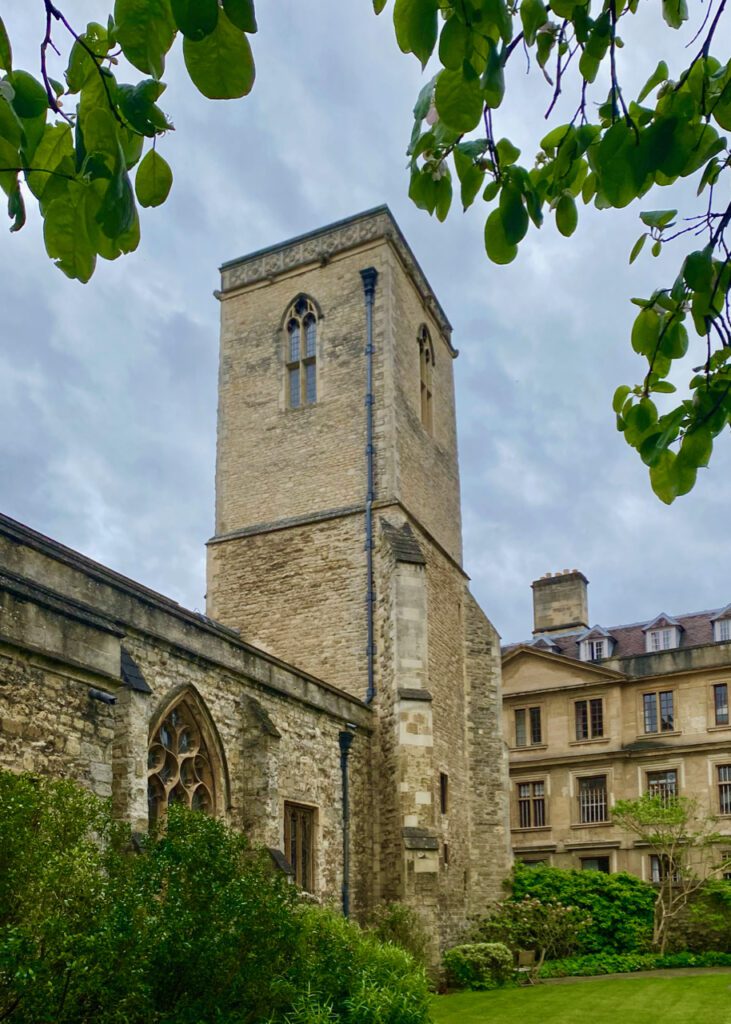

Gerald looks out over the peaceful Broadbent Garden in St Edmund Hall, past New College gardens, towards his old house in Wolvercote which he shared with Pam.
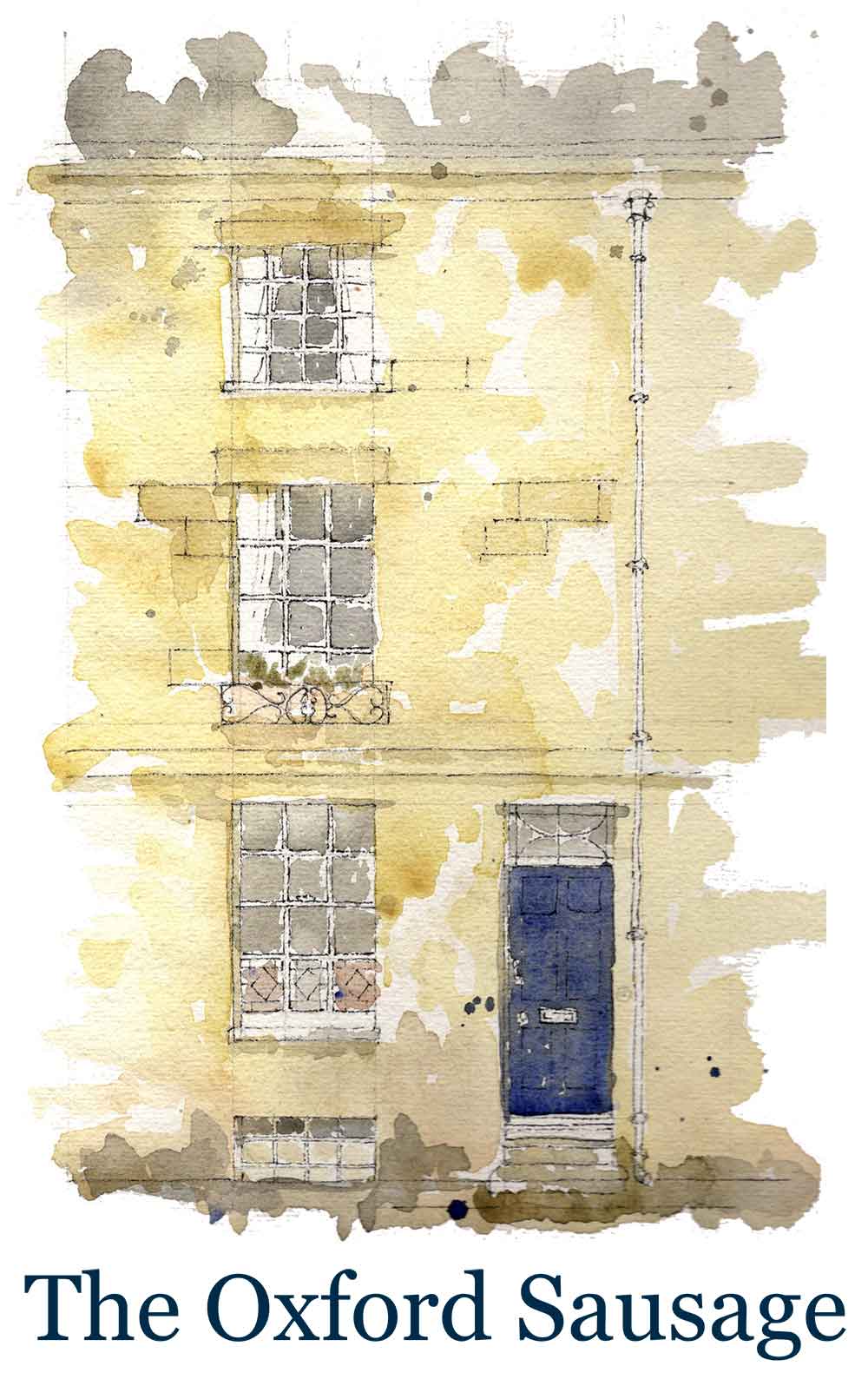
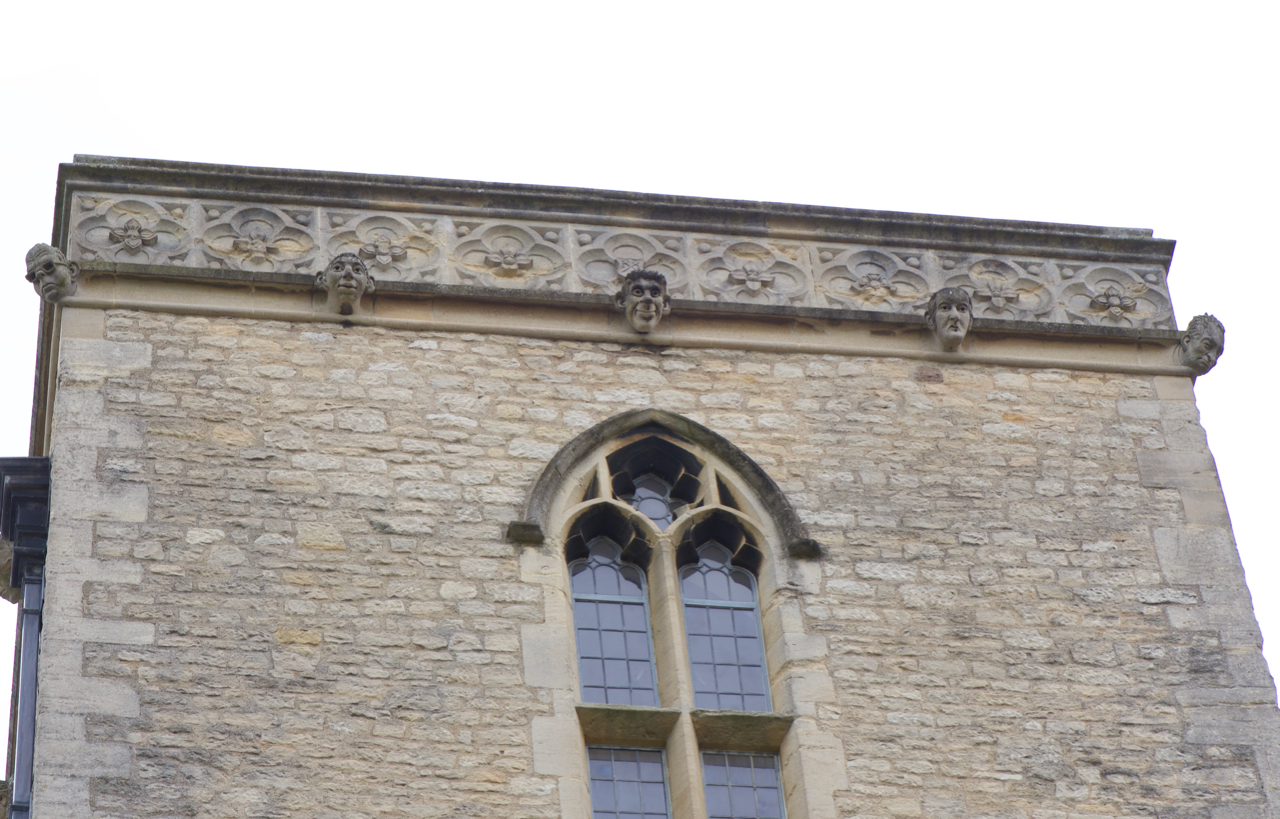
5 Comments
Join the discussion and tell us your opinion.
Coincidentally I pointed out some Gargoyles to my 8 yr old Grandson only last weekend and this information is very interesting. Thanks to John for the photos.
What fun knowing that as an artisan a grotesque of your head would be mounted forever where you had plied your trade. It is nice to see the mason’s work, shown together with the higher-ups, created for St. Peters-in-the-East. There is something fair and honest about the idea.
Gerald sounds like a nice chap. Very typical of Oxford from that period. I’ll keep a closer eye on those gargoyles in future. And loved the derivation of gargoyle from the French.
This is so interesting, especially as I recently discovered that an old tutor of mine, Justin Gosling, became Principal of Teddy Hall, and, on his retirement, a working gargoyle in his likeness was carved outside the Principal’s Lodging on the S. Side of the main quad. He looks a bit like Robin Day, who, coincidentally was an alum of the college. Apparently Professor Gosling wanted his gargoyle, when in action, to reflect the sight which he often saw of students exiting the bar/buttery late at night!
Fascinating story and wonderful insights into stone masonry and those gargoyles in particular.